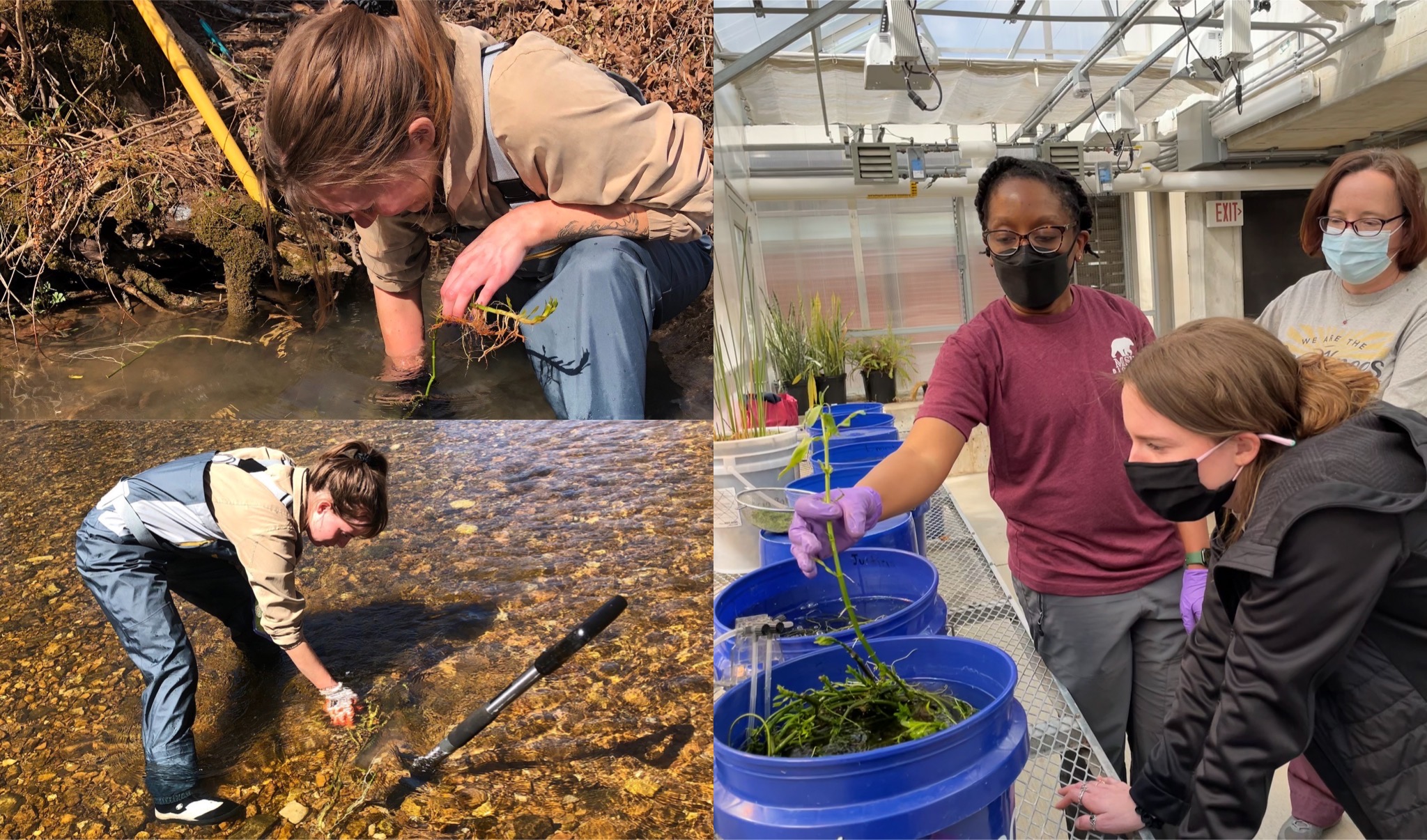Various types of plants and microorganisms inhabit Ozark lakes and streams.
But what role do they play in keeping the ecosystem running?
Alexis Reifsteck, undergraduate environmental and evolutional biology major in the College of Natural and Applied Sciences, is searching for the answer in her research.
The search for ecosystem engineers
Reifsteck’s research is investigating the ecological role of water willow (Justicia americana) in Ozark-area streams.
“We’re looking to see if it can be termed ‘ecosystem engineer,” Reifsteck said. “Essentially, in what ways does it significantly modify its environment?”
For nearly a month now, Reifsteck has been collecting her water samples from six sites along a local agricultural gradient.
“We have been collecting rhizomes, which reproduce asexually within the streambed,” she said. “This means they can come back after a huge disturbance, such as a flood, practically by themselves.”
In the lab, they look at the sample’s phosphate and nitrate levels to see if there is a significant difference in each stream and compare that with water willow growth.
“We began questioning if there is a difference in growth between the rhizomes, fibrous roots, and the shoots (stems and leaves) throughout the growing season to help with that recovery.”
Grant funds more than her project
Water willow is native to the state of Missouri.
The Stan Hudson Research Grant is for students who are conducting research on Missouri-native plants. Reifsteck’s project checks that box.
The MSU Stream Ecology Lab and Dr. Debra Finn, assistant professor in the biology department, support Reifsteck in her research.
“Alexis has been super fun to advise,” Finn said. “She not only has a lot of motivation and personality, but her research is comparable to that of graduate students.”
Besides funding Reifsteck’s project, the grant is fueling her goals and dreams.
“I want to change how science is talked about or seen within the public eye, and the Springfield community in general,” she said. “This grant motivates me to go out and talk to people about science, but in a way that everyone can understand how awesome it is.”

